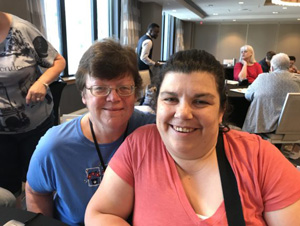Gorlin syndrome impacts women differently than men
Gorlin syndrome affects males and females equally. However, women with Gorlin syndrome have special considerations when managing their condition.
Reproductive organ health
Studies show that up to 25% of women with Gorlin syndrome have ovarian fibromas. Symptoms of ovarian fibromas include:
- Heavy or abnormal period bleeding
- Frequent urination
- Low back or abdominal pain
Typically, ovarian fibromas do not cause any problems unless they are large. There is no evidence that they affect fertility.
Women with Gorlin syndrome benefit from regular pelvic ultrasounds to monitor the development and growth of any potential ovarian fibromas.
Learn more about the symptoms of Gorlin syndrome.
Family planning and conception
For couples where one or both carries the gene mutation for Gorlin syndrome, it is possible through preimplantation genetic diagnosis (PGD), to carry a fetus that does not have the mutation.
PGD is done in conjunction with in-vitro fertilization. After the woman’s eggs are removed and fertilized in the laboratory with her partner’s sperm, the doctor can test the resulting embryos for the PTCH gene mutation. This is done by removing one cell from each embryo and testing it for Gorlin syndrome. The parents can then choose to transfer the embryos that do not test positive for Gorlin syndrome.

Women with Gorlin syndrome are at higher risk of developing ovarian fibromas
PGD is only available for couples going through the IVF process. Though PGD has been an available therapy for more than 20 years, it is a complex procedure that can be financially and emotionally expensive.
To find an assisted fertility specialist near you, use the Society for Assisted Reproductive Technology clinic finder.
Pregnancy and childbirth
Women (men, too) with Gorlin syndrome have a 50% chance of having a child with the condition. A geneticist can help with family planning.
There are two types of medical tests that can determine if a fetus has the Gorlin syndrome. The first, chorionic villus sampling (CVS), is done during the first trimester (first three months) and involves removing a tiny piece of the placenta. The second test is amniocentesis done during the second trimester or later (last 6 months). Amniocentesis involves removing some of the amniotic fluid.
Because children with Gorlin syndrome at birth have larger than normal heads, a woman who is carrying an affected baby should be closely evaluated as a candidate for early induction for vaginal delivery or at-term delivery by cesarean.
